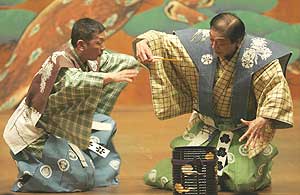How to celebrate New Year in Japan
 New Year in Japan: holiday history, traditions and customs, Japanese analogues of Santa Claus, Christmas tree, greetings and postcards, feast and festivities.
New Year in Japan: holiday history, traditions and customs, Japanese analogues of Santa Claus, Christmas tree, greetings and postcards, feast and festivities.
New Year is the most famous holiday celebrated on the whole planet. Each country has its own characteristics of celebration associated with the history, beliefs and traditions of each people.
In Japan, the New Year has been celebrated for more than a hundred years according to the Gregorian calendar – January 1.
history of the holiday
For many centuries, the Japanese New Year was celebrated in early spring, the date was floating and determined by the lunar calendar. This order of things was maintained until 1873, when the Meiji revolution took place, as a result of the reforms, the date was postponed to January 1.
The celebration lasts from December 29 to January 4. During this period, business activity slows down, work ceases at the enterprises, all are engulfed in festive fuss.
Preparation, rite of purification
The Japanese pay great attention to cleanliness. On December 13, in accordance with ancient traditions, a general cleaning is carried out. They carefully clean the dwelling so that the Shinto god Toshigami does not pass by, and good luck and well-being are always in the house. The ritual is called the Susu Harai, after it is performed, the composition of the Kadomatsu is established before entering the house.
Before December 31, it is customary to pay off debts, prepare a festive table, take a furo, and dress beautifully. Children should wear light-colored kimonos, and adults should wear dark-colored kimonos. Children under twelve years old should celebrate the holiday in new clothes.
Holiday attributes
Japanese New Year holiday attributes
Santa Claus
In Japan, the god Hotejosho is traditionally considered Santa Claus. He is asked for happiness and good luck, without exception, children and adults. Santa Claus is also known here, and Segatsu-san and Oji-san appeared relatively recently. The first character does not give gifts (this is the responsibility of the parents). He is committed to congratulating people on apartments. Before his arrival, a low gate is built in front of the house made of pine branches and bamboo. At the houses of wealthy Japanese are dwarf trees of pines, peaches and plums.
Japanese New Year holiday attributes
Segatsu-san
Motibana
Motibana is almost ikebana, only it is customary to do it on New Year’s Eve, home decoration is considered one of the most ancient Japanese traditions. The Japanese place branches of bamboo or willow throughout the house, hang figures of plants, flowers, fish, fruits on them. This ritual is associated with attracting the spirit of the holiday. If you manage to create the atmosphere necessary for him, then the house will also have plenty throughout the next year.
Kadomatsu
In the country of the Rising Sun, instead of a Christmas tree, they decorate a pine. To be more precise, this is an article made of rice straw, bamboo, pine, decorated with fern and tangerines. In coastal regions, Kadomatsu is additionally decorated with algae and shrimp.
Traditions and customs
Japanese New Year traditions and customs
Holiday is a time of different ceremonies. Countless fairs are opening across the country. Almost everything is sold there: from small souvenirs to food and clothing.
Traditional attributes:
hamaimi – arrows to protect the house from evil spirits;
ships of takarabune – they are filled with lentils, it is believed that deities of fortune live in such ships;
Daruma – an eyeless doll of desires – its owner makes a wish and draws one eye, the second can be finished when the wish comes true, if this does not happen, the doll is burned in a traditional bonfire for the next New Year;
kumade – an amulet that translates as a bear’s paw, in shape resembles a rake for attracting happiness.
A signal announcing the arrival of the holiday is considered to be 108 bells, which sound exactly at 12 o’clock.
According to the ancient Japanese legend, his blows heralds the deliverance from vices. In total, there are 6 vices in Japanese culture, each with 18 shades.
When the ringing of the bell calms down, thousands of Japanese people go out to the squares and streets, it is believed that in these morning hours the deities of happiness swim to the shores of the land of the Rising Sun. All of them have a complex name, each personifies one of the positive features. On the second of the day, a kaki-zome ceremony is held in the temples, within the framework of which a happy character is written.
Feast
Japanese New Year feast
After ringing bells, visiting the temple, many return home to try traditional Japanese food – o-seti. A dish is an integral attribute of the New Year’s table, its peculiarity lies in the serving – in three different boxes (jubako), various components are placed, carefully selected according to their taste properties. It can be a vegetable, fish, egg roll, all the components symbolize a specific New Year’s wish.
Initially, these dishes were intended for deities, this food also attracts well-being in the family. Each ingredient symbolizes something, all dishes are prepared in such a way that they keep freshness as long as possible and do not spoil.




